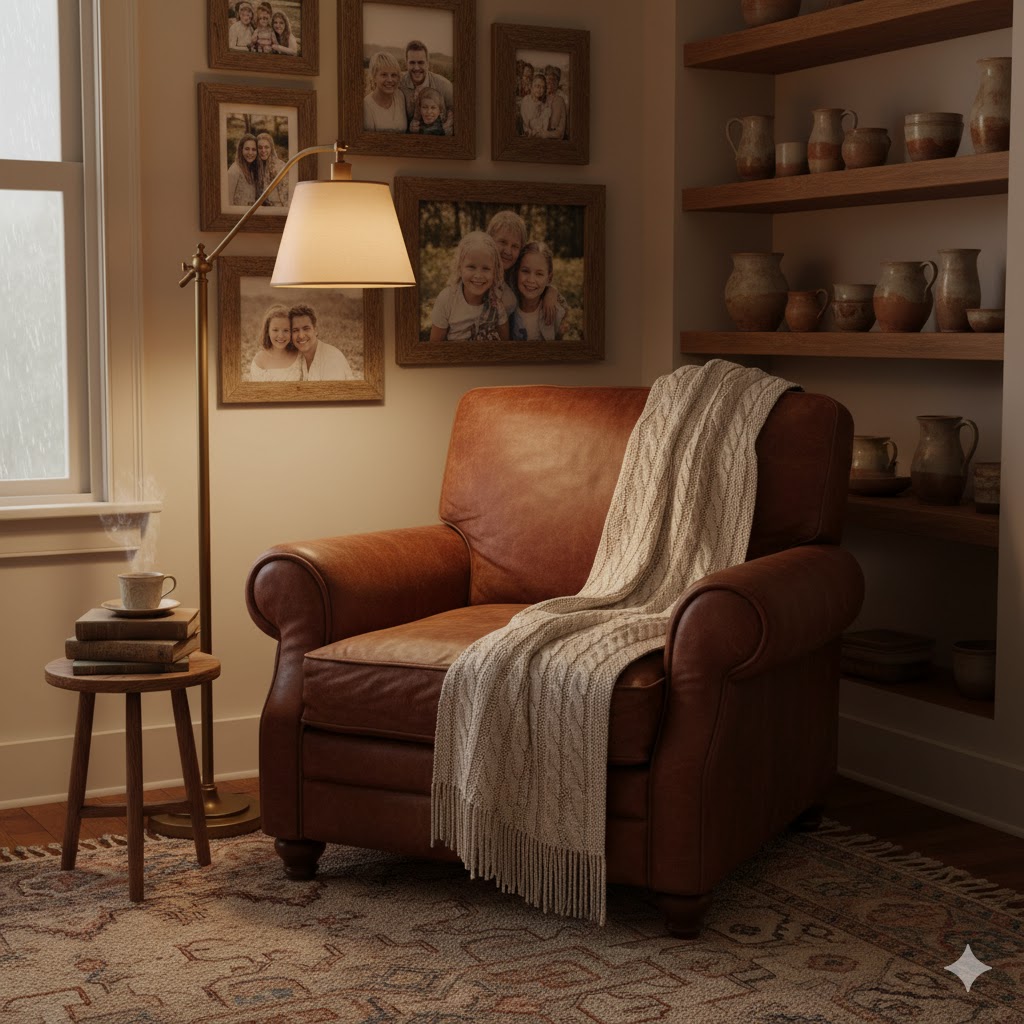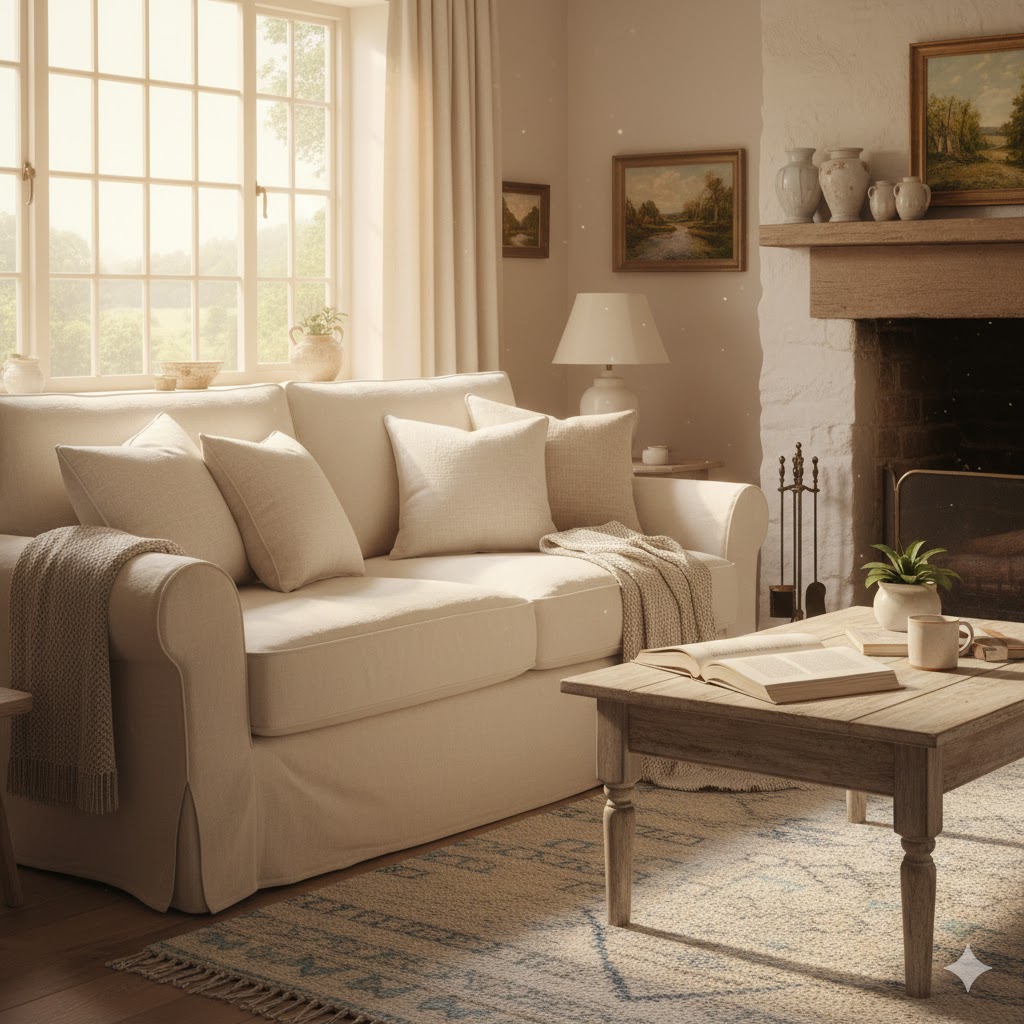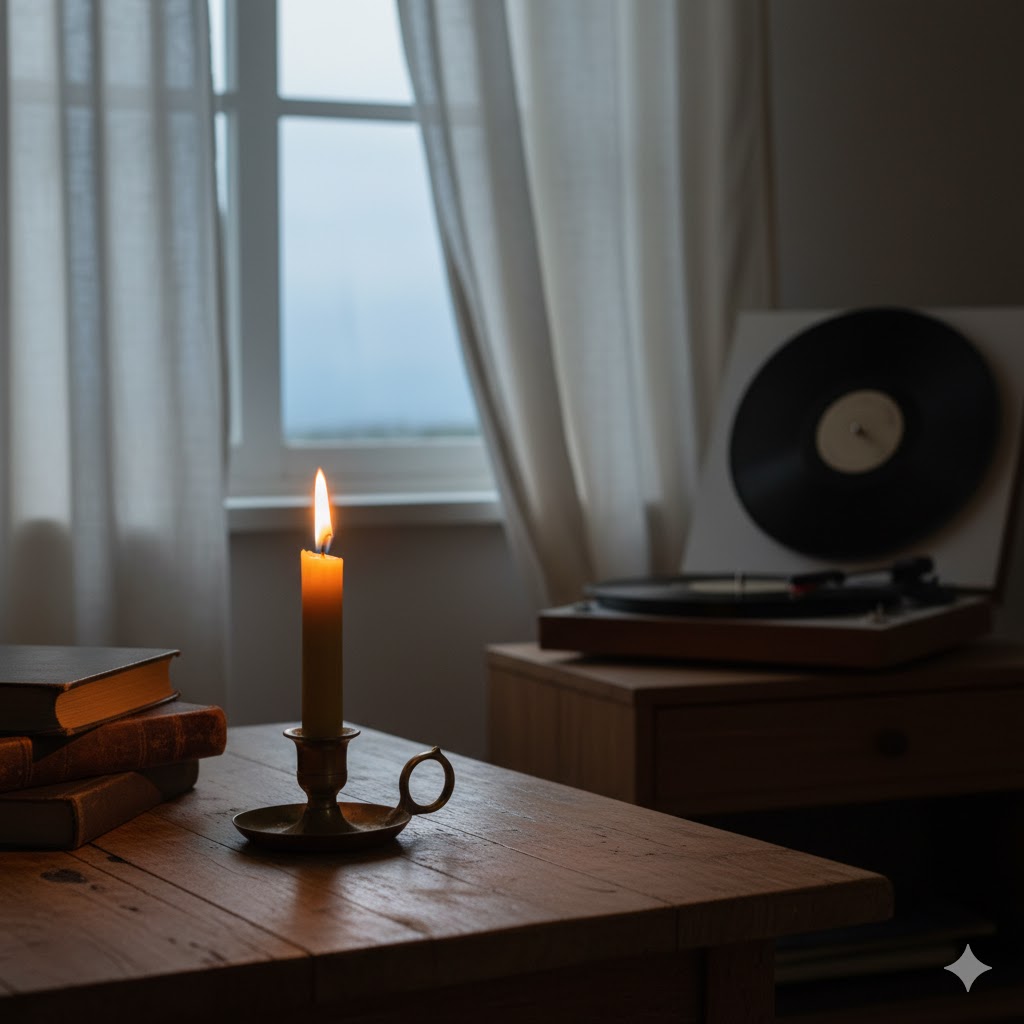There’s something quietly magnetic about homes that feel warm, worn-in, and close to nature. The kind of place where you walk in, kick your shoes off, and instantly feel like you’ve exhaled a little. Earthy cottage home decor is, in many ways, a rebellion against the sterile and over-styled—an embrace of what’s imperfect but honest.
If you’ve ever looked around your space and thought, this could use a bit more soul, you’re not alone. Below are ten thoughtful (and realistic) ways to bring that grounded, cottage-like magic into your home—without turning it into a museum of antiques or an overdone Pinterest board.
1. Start with a Warm, Grounded Color Palette

A cottage-inspired space almost always starts with color. Earthy doesn’t mean dull; it’s a quiet mix of lived-in neutrals—warm whites, soft beige, clay, olive, muted golds—that appear to have faded beautifully over time.
What works best are hues that remind you of something tactile: soil, sand, sun-bleached linen. I’ve found that undertones matter more than shades. Even the right “white” may lean too cold under artificial light.
2. Choose Materials That Tell a Story

Mass-produced furniture can look perfect—but perfection can also feel sterile. Earthy cottage style thrives on the tactile: reclaimed wood, aged brass, handmade pottery, even a few scratches on a tabletop.
These things may suggest imperfection, but they also imply life lived. A weathered stool with paint chipping off isn’t ruined—it’s recording time.
If you’re buying new, try to find materials that feel like they could age well—matte finishes, unfinished oak, handwoven baskets.
3. Layer Textures, Not Just Objects

Texture is what separates a cozy space from one that feels flat. Think linen against wool, clay against wood grain, jute beside stone. The best rooms don’t match—they balance.
Be careful, though. I once made the mistake of overloading on texture—jute rug, heavy knit blanket, wicker chairs. The result? It looked like a craft market exploded. When everything screams “touch me,” your eyes don’t know where to rest.
Mix in some smooth surfaces: plaster, polished wood, maybe a glazed ceramic vase.
Image prompt:
A bedroom corner with a linen armchair, jute rug, wooden stool, and a smooth ceramic lamp base for contrast.
4. Mix Old and New (But Be Intentional)

Vintage and modern can coexist beautifully, but only when they’re in conversation—not competition. A 1930s dresser can pair with a minimalist mirror, provided the finishes harmonize.
Some designers argue that mixing eras risks cluttering the aesthetic. They’re not wrong—but it depends on scale. A single antique chair can anchor a modern space. Three antique cabinets? Probably overkill.
5. Let Imperfection Have the Last Word

A scratch on the floor, a slightly uneven plaster wall, a crooked photo frame—it all adds to the “hand-touched” feeling of an earthy home. It’s tempting to fix every flaw, but sometimes restraint is wiser.
There’s a Japanese concept, wabi-sabi, that celebrates the beauty of impermanence. Earthy cottage decor often flirts with this idea—it’s not sloppiness, it’s acceptance.
So when your linen wrinkles or your wooden shelf darkens with age, maybe just… let it.
6. Use Lighting That Feels Like Candlelight

If you can see your ceiling light from space, it’s too bright. Earthy homes prefer mood over visibility. Table lamps, sconces, candles, even paper shades—all help diffuse harsh light.
Soft lighting appears to slow time. Warm, dim bulbs flatter wood grains and fabric textures, while cold light flattens them.
When I swapped my overhead bulb for a linen-shade lamp, it changed everything—the room felt like it exhaled.
7. Bring the Outside In

If the theme is “earthy,” well—start with the earth. Plants, dried grasses, stones, branches, clay pots, even bowls of pinecones. These are not decorative clichés if used thoughtfully.
A small olive tree by a window, a hanging fern near the shower, a few sprigs of eucalyptus in a vase—all effortless touches that soften corners.
Just note: not all plants thrive indoors. Choose low-maintenance ones if you’re, like me, slightly forgetful about watering.
8. Choose Meaning Over Perfection

Earthy cottage decor often carries an emotional undertone. A ceramic cup you made, your grandmother’s chair, a print from a local market—items with a story matter more than matching sets.
Design shouldn’t erase personality. I’ve visited houses that were objectively beautiful but felt sterile, like hotel rooms. Meaning makes beauty resonate.
Ask yourself, “Would I still love this piece if it weren’t trendy?” If the answer is yes, it belongs in your space.
9. Keep It Light—but Not Bare

Minimalism can feel cold; maximalism, chaotic. Earthy cottage decor sits somewhere in the middle—it’s curated comfort.
The trick is editing. Every few months, remove one or two items and see if the space breathes easier. You’ll likely find that what remains carries more weight.
There’s an honesty in a room that looks lived in, not staged. So let the books lean, the pillow wrinkle, the basket sit slightly off-center.
10. Let Scent, Sound, and Sensation Finish the Story

Home isn’t just what you see. It’s how it smells and sounds—the crackle of a wood wick candle, the faint scent of cedar or citrus, the creak of a floorboard.
These sensory layers complete the earthy cottage narrative. Even the act of lighting incense or burning a wood candle changes the emotional texture of a room.
Some designers skip this part, but I’d argue it’s what transforms “decor” into “atmosphere.”
Final Thoughts
What makes earthy cottage home decor so magnetic isn’t its aesthetics alone—it’s the philosophy behind it. It’s a quiet pushback against disposable design, an appreciation for craftsmanship, and a reminder that homes aren’t meant to be flawless—they’re meant to be lived in.
Maybe the chipped mug and frayed rug aren’t flaws at all. Maybe they’re proof that you were there, that life happened, and that it’s okay if the beauty comes with a little dust on it.
So go ahead—let your home exhale.